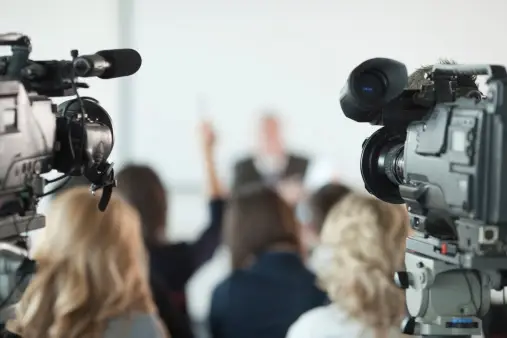Media interviews have become a crucial part of the modern communication landscape, serving as a vital link between public figures, organizations, and the general public. They come in various formats, each with its own set of rules, objectives, and strategies. Understanding these different types of media interviews is essential for anyone looking to effectively communicate their message, navigate the media landscape, and engage with their audience. This knowledge is also a key component of media training, a practice designed to prepare individuals and organizations for successful interactions with the press.
1. Live Interviews
Live interviews occur in real-time and offer no opportunity for editing or second chances. These can be conducted over television, radio, or online platforms. The immediacy of live interviews adds a layer of pressure, as interviewees must think on their feet and respond to questions without delay. Media training can be particularly beneficial for live interviews, teaching individuals how to stay calm under pressure, think quickly, and convey their messages effectively.
2. Recorded Interviews
Recorded interviews provide some leeway, as they are taped in advance and broadcasted later. This format includes television segments, podcast episodes, and some radio shows. The main advantage is the opportunity for editing, which can remove errors or refine the interview to fit a specific time slot. However, the possibility of being taken out of context is a concern, making it essential for interviewees to be clear and concise in their responses.
3. Print Interviews
Print interviews are conducted for newspapers, magazines, and online publications. They may happen over the phone, via email, or in person. The key characteristic of print interviews is the reliance on the written word, meaning that non-verbal cues do not influence the reader’s perception. Precision in language and clarity of thought are critical, as there is no tone of voice or body language to aid in conveying the message. Media training helps individuals learn how to provide quotable, concise answers that align with their messaging goals.
4. Press Conferences
Press conferences are a form of live interview involving multiple media outlets at once. They are typically organized to make announcements, address significant issues, or respond to pressing questions from the media. The format allows for a broad dissemination of information but requires careful preparation and control to manage the narrative effectively. Media training for press conferences focuses on message development, controlling the flow of information, and handling difficult questions from journalists.
5. Satellite Interviews
Satellite interviews involve remote communication between the interviewer and interviewee, who are in different locations. This type of interview is common in television news and requires the interviewee to speak into a camera with an earpiece for audio. The lack of face-to-face interaction can be challenging, making it crucial for the interviewee to maintain energy and engagement with the audience. Media training can help individuals master the technical and performance aspects of satellite interviews.
6. Panel Discussions
Panel discussions feature multiple guests discussing a topic in front of an audience or on a broadcast. These can be challenging as they involve interacting not only with the moderator but also with other panelists. The key to succeeding in a panel discussion is to stand out positively, contribute valuable insights, and engage constructively with others. Media training for panel discussions often focuses on techniques for effective communication in a group setting and strategies for dealing with conflicting viewpoints.
7. Editorial Board Interviews
Editorial board interviews are meetings between public figures and the editorial staff of a publication to discuss issues in depth. These interviews can influence the publication’s stance on certain topics and are an opportunity to shape opinions among influential journalists. Preparation and in-depth knowledge of the subject matter are crucial, as these interviews tend to be more substantive and detailed.
8. Investigative Interviews
Investigative interviews are conducted by journalists looking to uncover the truth about a complex issue, often involving extensive research and probing questions. Interviewees must be cautious, as these interviews can be adversarial. Media training can provide strategies for maintaining composure, staying on message, and avoiding pitfalls that could lead to negative outcomes.
Conclusion
Navigating the diverse landscape of media interviews requires a solid understanding of the different formats and the skills to handle each effectively. From live to recorded, print to satellite, and beyond, each type of interview presents unique challenges and opportunities. Media training plays a crucial role in preparing individuals and organizations to communicate their messages clearly, confidently, and effectively, regardless of the format. By mastering the art of the media interview, individuals can ensure their voices are heard, their objectives are achieved, and their public engagements are successful.

